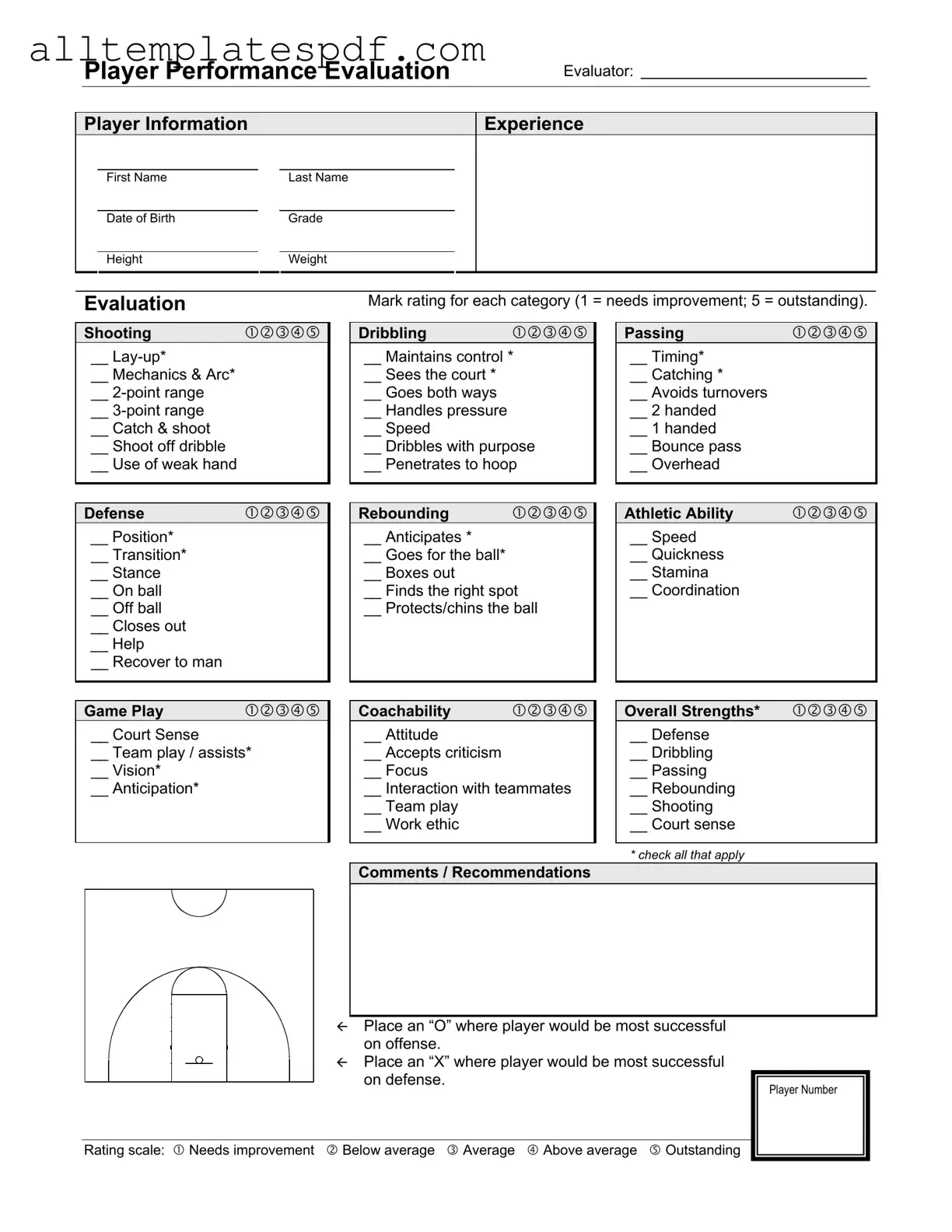Filling out the Basketball Evaluation form can be a straightforward task, but many people make common mistakes that can lead to inaccurate assessments. One frequent error is not providing complete player information. Missing details such as the player's first name, last name, or date of birth can create confusion and hinder the evaluation process.
Another mistake is failing to use the rating scale correctly. Each category should be rated from 1 to 5, but some evaluators may overlook this, leading to incomplete or inconsistent evaluations. It's essential to understand that a score of 1 indicates a need for improvement, while a score of 5 signifies outstanding performance.
Many evaluators also neglect to check all applicable categories. For example, when assessing shooting skills, some may forget to mark the lay-up or mechanics and arc sections. This oversight can skew the overall evaluation, as it does not provide a comprehensive view of the player's abilities.
Another common error involves inconsistent scoring. Some evaluators may rate a player highly in one category but fail to reflect that skill level in others. This inconsistency can lead to a misleading overall impression of the player's capabilities. It’s crucial to maintain a balanced perspective across all categories.
Additionally, evaluators sometimes skip the comments section. This area is an opportunity to provide valuable insights and recommendations. Without these comments, the evaluation lacks context, which can be critical for coaches or scouts reviewing the form later.
Another mistake occurs when evaluators ignore the importance of coachability. This aspect is vital for a player's development and should not be overlooked. Evaluators should assess attitude, focus, and interaction with teammates to gauge a player's willingness to learn and improve.
Lastly, some evaluators forget to indicate the player’s strengths in the overall strengths section. Highlighting a player’s key skills is essential for coaches to understand where the player excels. Without this information, the evaluation may not reflect the player’s true potential on the court.
